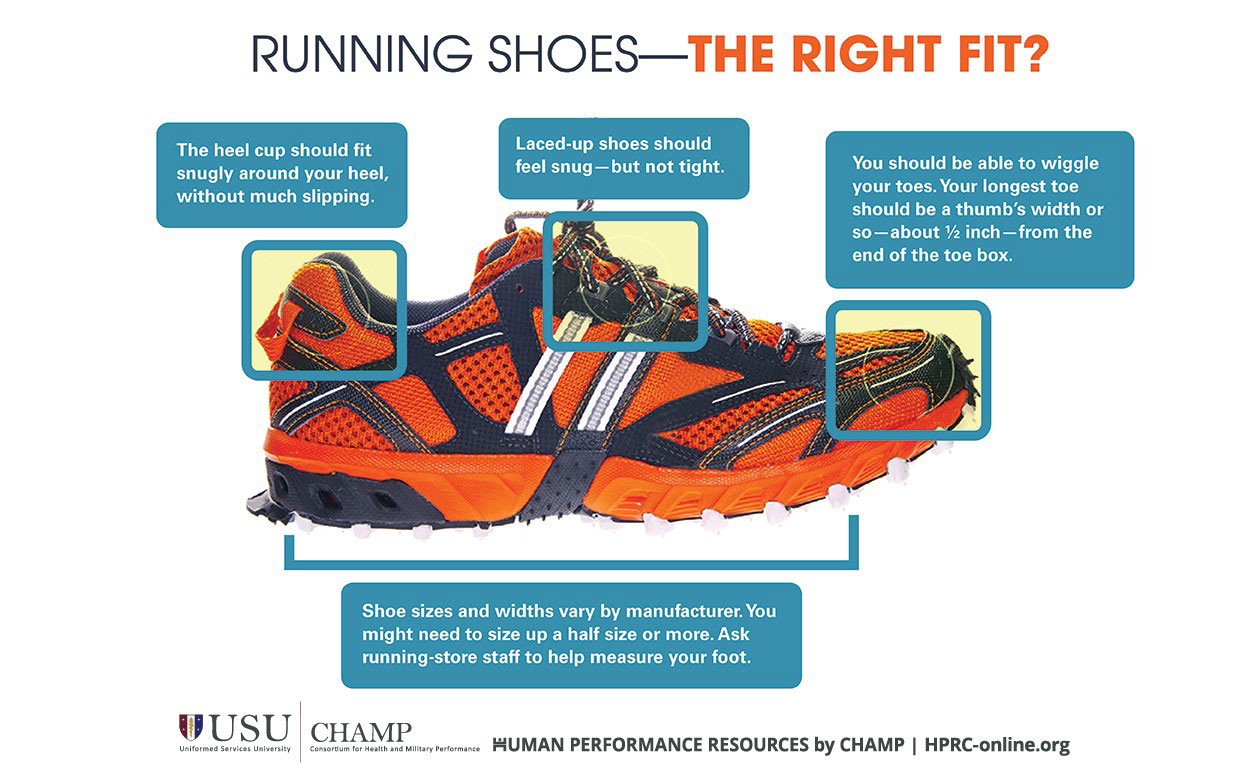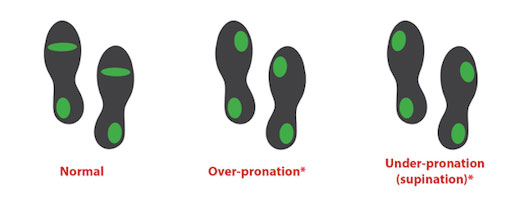It can be hard to choose the right sneakers for your workouts. There are so many different brands and types that can make the task seem daunting.
You can ask the pros at any specialty running store to help you choose the correct shoes. But beware of the marketing gimmicks. Many companies use foot “analyzers” and other devices to promote their product’s ability to reduce your risk of injury, especially when it comes to custom and semi-custom orthotics. Salespeople also might try to get you to buy a certain shoe or orthotic to match your foot type because it’s supposed to reduce your risk for injury. Don’t fall for this sales tactic. Experts agree that matching shoes to foot type doesn’t reduce injury risk. Some research also shows that different shoe types don’t change how your foot moves within the shoe very much. If the shoes don’t change how your feet move, they aren’t correcting what’s thought to be the risky movement.
Matching a shoe to your foot type might be good for comfort and perceived support. Comfort is one of the most important aspects when it comes to choosing the right shoe. It can make your workouts feel better and prevent blister formation. It’s perfectly fine to search for the right shoe or orthotic for comfort and support reasons. Just don’t buy the “reduced-injury risk” reason.
Experts agree that matching shoes to foot type doesn’t reduce injury risk.
Shoes come in all shapes and sizes, and some brands tend to run wider or narrower than others. What might affect your injury risk is ensuring that your shoes fit well. A well-fitting shoe will best use its shock-absorbing properties and limit your foot from moving too much (within the shoe). This is especially important for recruits who are issued boots and sneakers when they arrive at boot camp. They might feel pressure to take the easiest selection for footwear, rather than trying on a few different options.
Sneaker buying tips
- Shop at the end of the day. Your feet expand over the course of the day as you stand and walk on them. Shopping when your feet are at their largest will help you find the best fit, especially when it comes to finding the right width.
- Bring or wear a pair of good socks, preferably the kind you’ll be running in.
- Find the right length. Your shoes should be a quarter to a half inch longer than your longest toe. (Note this isn’t always the big toe. Some people’s second toe is longer than their first.) This amount of space will allow a little bit of movement in the shoe when you’re walking and running, and prevent your toes from being jammed into the front of the shoe.
- Take along any insoles or orthotics you usually wear during runs. Replace the insoles from your (potential) new shoes with your current orthotics or insoles to ensure a comfortable fit.

Sneaker wear patterns
Shoe wear patterns are commonly used to identify how your foot might move when you’re running. A neutral wear pattern will show the most wear towards the ball of your foot behind your second toe. This is compared to “overpronators” who show more wear towards the inside edge of the ball of their foot, and “oversupinators” who have the most wear towards the outside edge. Overpronators have flat feet, while oversupinators have high arches. Certain types of shoes and insoles might help correct overpronation to make it more neutral. This is because overpronation is often caused by too much flexibility in the foot itself. There isn’t much that can be done about oversupination because it’s a rigid high arch. Shoes and insoles for oversupinators usually provide more cushion because the foot itself isn’t as able to absorb shock.
Again, finding shoes and insoles that match your foot type isn’t going to reduce your risk of injury. Instead, it might help even out the wear pattern so you can get a little more mileage out of them before they wear out.

How to tie your laces
Changing up how you tie your laces can fine-tune your shoe’s fit, particularly if you’re experiencing a hot spot, slipping heel, or other issues.
Heel lock for a slipping heel.
The extra eyelets at the top of your sneakers are for this heel-lock method to secure your foot, without having to tighten the rest of your shoelaces.
Black toenails.
If your toenails are turning black and blue, tie your shoelaces to help pull the shoe away from your toes and give them more wiggle room. Remember: The lace ends don’t have to be even once you start lacing your shoes. The diagonal lace can be a little shorter to start with, but leave enough so you can finish tying your shoes.
Hot spot or high arches.
If you have a sore spot on the top of your foot or you have high arches, lace around painful areas—not over them—by moving the laces up or down, depending on where the irritation is located.




